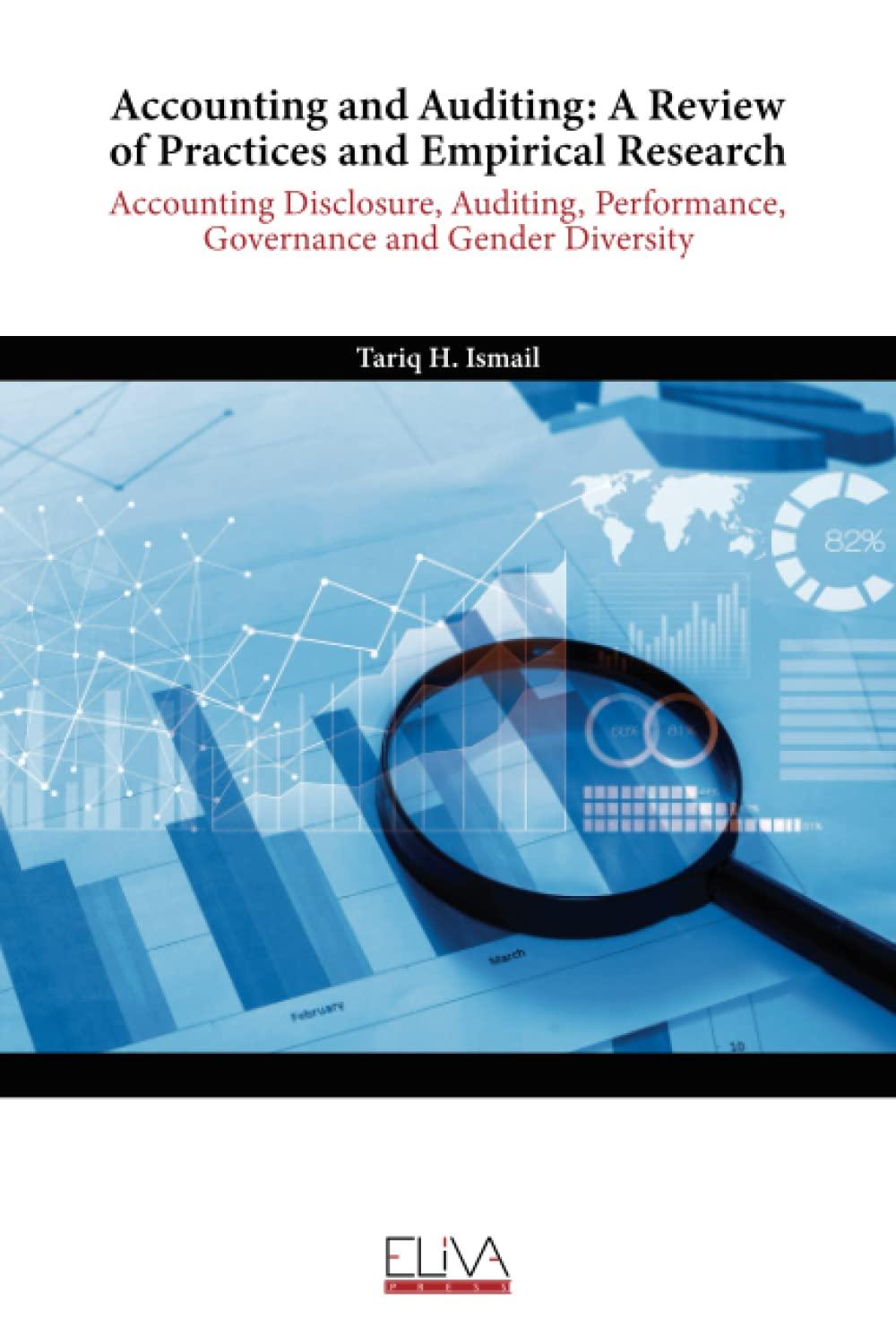Answered step by step
Verified Expert Solution
Question
1 Approved Answer
NOTE; 10 first parts have been answered by Abhisek M., only answer the remainder. Problem 17-5B Calculation of ratios and trends LO2,4 SOLVE IT CHECK


NOTE; 10 first parts have been answered by Abhisek M., only answer the remainder.
Problem 17-5B Calculation of ratios and trends LO2,4 SOLVE IT CHECK FIGURES: 1a. 2020: 2.04, 1c. 2020: 12.03, 1e. 2020: 1.20, 1g. 2020: 11.59, 1i. 2020: 1.16 The 2020 four-year comparative financial statements of Digital Shelf Space Corp. follow: Digital Shelf Space Corp. Balance Sheet December 31 2020 $ 33,349 56,000 120,207 10,018 1,602 548,800 $ 769,976 2019 2018 $ 27,718 $ 23,267 72,000 56,000 50,086 31,304 6,637 4,830 876 537 627,200 705,600 $784,517 $821,538 2017 $ 20,938 40,000 17,200 3,784 344 784,000 $866,266 Assets Cash....... Investments Accounts receivable, net Inventory..... Prepaid expenses.. Plant and equipment, net... Total assets....... Liabilities and Equity Accounts payable ....... Accrued wages payable. Income taxes payable..... Long-term note payable, secured by mortgage on plant assets Common shares, 180,000 shares... Retained earnings... Total liabilities and equity..... $ 50,086 16,028 36,662 459,200 176,000 32,000 $769,976 $ 33,182 8,765 19,370 515,200 176,000 32,000 $784,517 $ 24,149 5,366 12,823 571,200 176,000 32,000 $821,538 $ 18,920 3,440 8,706 627,200 176,000 32,000 $866,266 1160 Digital Shelf Space Corp. Income Statement For Years Ended December 31 2020 Net sales..... Cost of goods sold. Gross profit Operating expenses... Operating profit Interest expense Profit before taxes Income taxes Profit $1,001,728 500,864 $ 500,864 320,553 $ 180,311 27,552 $ 152,759 36,662 $ 116,097 2019 $626,080 331,822 $294,258 175,302 $118,956 30,912 $ 88,044 19,370 $ 68,674 2018 $447,200 241,488 $205,712 107,328 $ 98,384 34,272 $ 64,112 12,822 $ 51,290 2017 $344,000 189,200 $154,800 68,800 $ 86,000 37,632 $ 48,368 8,706 $ 39,662 Required 1. Calculate the following for 2020 and 2019 and identify whether the ratios compare favourably (F) or un- favourably (U) from 2019 to 2020: (a) quick ratio, (b) inventory turnover, (c) accounts payable turnover, (d) debt ratio, (e) ratio of pledged assets to secured liabilities, (f) times interest earned, (g) profit margin, (h) return on total assets, and (i) book value per common share. 2. Prepare a trend analysis for 2017 (the base year) through to 2020 using the income statement information. Analysis Component: Compare and explain the trend in cost of goods sold, operating expenses, and profit to the trend in net sales. Explain why retained earnings are constant over the four yearsStep by Step Solution
There are 3 Steps involved in it
Step: 1

Get Instant Access to Expert-Tailored Solutions
See step-by-step solutions with expert insights and AI powered tools for academic success
Step: 2

Step: 3

Ace Your Homework with AI
Get the answers you need in no time with our AI-driven, step-by-step assistance
Get Started


